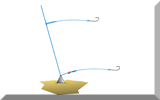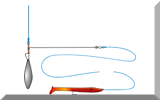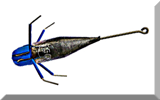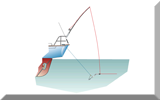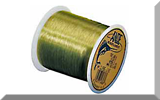Here's How to Rig Saltwater Leadheads Correctly
|
First, you should check that the back of the 'head' and the front end of the soft plastic shad will fit neatly together - if it doesn't, you'll need to trim it with a sharp knife as shown below. |
 |
Having trimmed off the head, place the jig hook alongside the shad and mark the place on the centreline at which the hook-point should emerge. |
 |
Then insert the hook in the forward face of the shad, and in a single movement thread the hook through the lure and out at the mark. Perfect! |
 |
Doesn't Look Right? Start Again!
But if the lure is either stretched or bunched on the hook you'?ve not got it right - in which case you should carefully remove the hook and start again.
Rigged thus, leadhead lures can be trolled slowly astern, jigged vertically from a drifting boat, cast from the shore - or best of all in my experience - cast astern and then twitched slowly along the seabed using a sink-and-draw technique from a drifting boat.
Note that the hook emerging from the top of the lure goes a long way towards preventing the collection of seaweed and seabed debris.
Rigging Leadhead Jigs Without the Leadhead
Without the leadhead, the plain shad shown above would be rigged with special cranked hook and used on a short snood where you may have otherwise used a plastic muppet. |
 |
Read more about rigging unweighted leadheads (shads) and jelly worms...
